I have now spent just under a week in Gibraltar. More precisely, I spent most of the time in La Linea De La Concepción on the Spanish side.
In this article I report on my visit to the Rock of Gibraltar and give you some tips if you want to go there yourself. If you don’t want to go to Gibraltar soon and don’t have much time to read, skip the tips about Gibraltar and read the second part instead, which is more exciting! There I tell you about my search for a boat, about many fellow travellers and the “jungle” in which we camped! Tips on hitchhiking across the Atlantic will be in a separate article.
Have fun reading.
Visit to Gibraltar: Absolute recommendation and a few tips
Even though I came to Gibraltar mainly to find a boat across the Atlantic, I definitely wanted to see the famous Rock as well and even though it is extremely touristy there, I can only recommend the visit.
It gets exciting as soon as you enter the city – the entire Rock is, in effect, simply a city plus a few beaches and Gibraltar has one of the highest population densities in the world. As soon as you cross the border, you realise that Gibraltar is British. English is the main language spoken (you can hear the British accent), the currency is pounds and there are red telephone boxes everywhere.
Despite Brexit, it is quite easy to get across the border, even your passport is enough and in my experience passport and luggage are hardly checked (I was a bit disappointed that I couldn’t get a stamp in my brand new passport).
Just across the border is the airport runway, which you walk across towards the city. When a plane lands or takes off, the runway is closed and you may have to wait 10 or 15 minutes before moving on.
The centre of Gibraltar is not very spectacular and the most beautiful part of the town is the harbour. There are a few old fortress remains and otherwise a lot of shopping opportunities in modern concrete and glass buildings, which are not very attractive. The harbours of Gibraltar are also not particularly beautiful and very touristy. But well, one visits the place rather because of the over 400m high rock, which juts out directly from the city and offers a majestic view everywhere from the city.
To get into the nature reserve, which includes the entire upper part of the rock and also the monkeys, you have to pay an entrance fee of 16 pounds. A hefty tourist price, but well worth it. There is a lot more to discover on the rock besides the monkeys, which can be found in various places:
The dripstone cave “St. Michaels Cave” is really big and impressive. Unfortunately, it is elaborately equipped with light shows and sound effects. But having seen some more natural stalactite caves, I found it exciting and a bit funny. In the past, people believed that the cave was bottomless, so there was a rumour that there was an underground connection between Europe and Africa. The Barbary macaques also came to Gibraltar through this connection. During the Second World War, a hospital was set up in the cave, but it never went into operation.
There are still some tunnels in the entire rock from the Second World War, but most of them date from much earlier times. The most exciting tunnel, which I also visited, is the Siege Tunnel. There you can see some cannons and other old weapons and learn a lot about the sieges of Gibraltar!
A little below the tunnels there is also an old fortress, Moorish Castle, with a great panoramic view over the city.
The highlight for me, however, remains the free-living Barbary macaques, definitely one of my favourite animal species. The animals stay mainly in 2 places: near the absolutely overrated skywalk and at the top station of the cable car, because there they can often grab some food from tourists. They have become very accustomed to the presence of tourists and are quick to grab anything that is not well secured. Whether it’s a roll from their hand or a packet of biscuits from the backpacks they try to open themselves. I have also observed some monkeys jumping on the heads or backs of tourists or waiting in front of a shop to possibly grab the ice cream they just bought. The collection of mobile phones and cameras that the monkeys have already stolen is said to be considerable.
Some of the guides bring extra snacks to feed the monkeys and elicit a handshake or something. I’m out of that, I don’t like it. I prefer to watch the monkeys from a distance and leave them alone. It says everywhere that you shouldn’t feed them. That was one of the reasons why I broke off my tour and continued on my own.
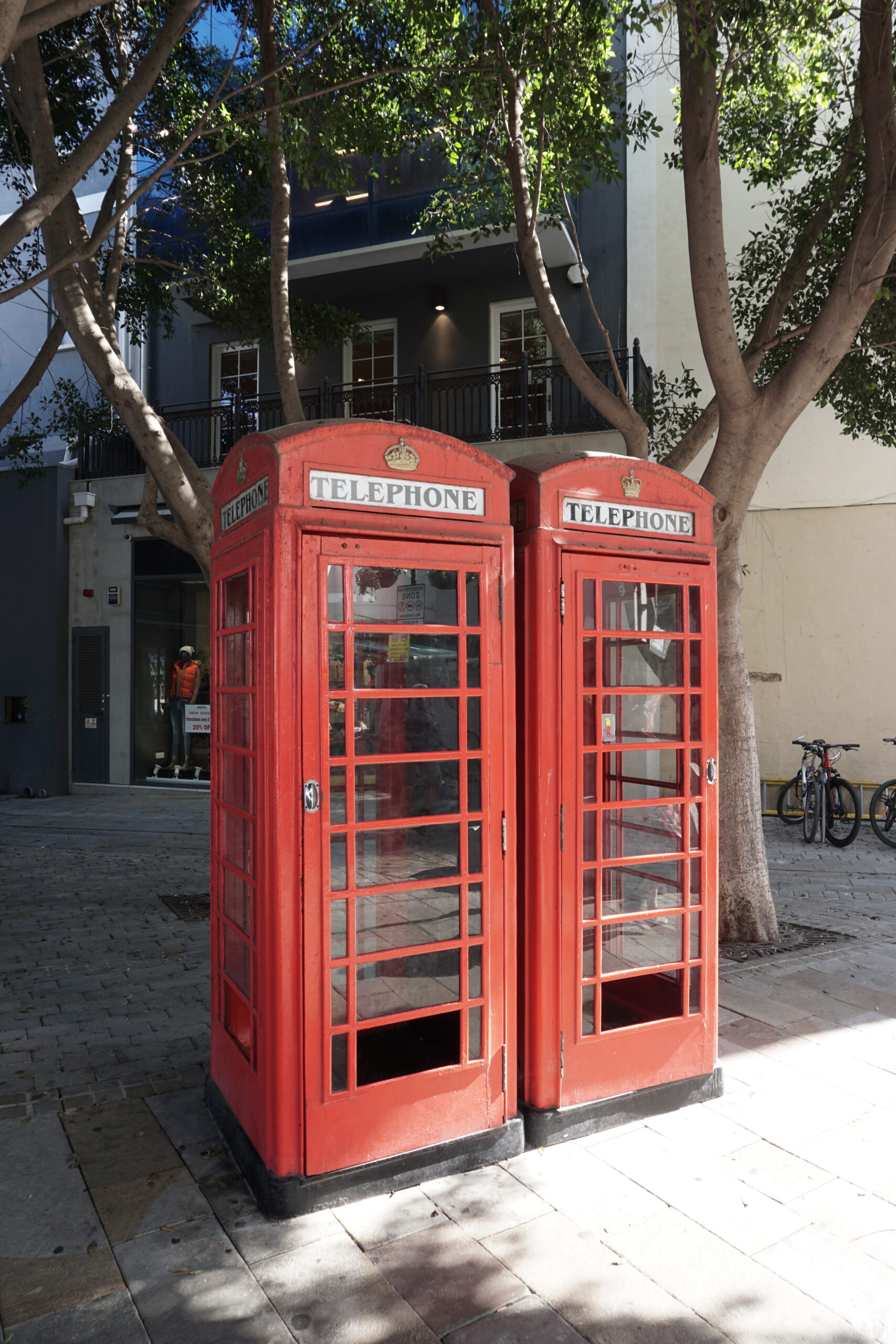
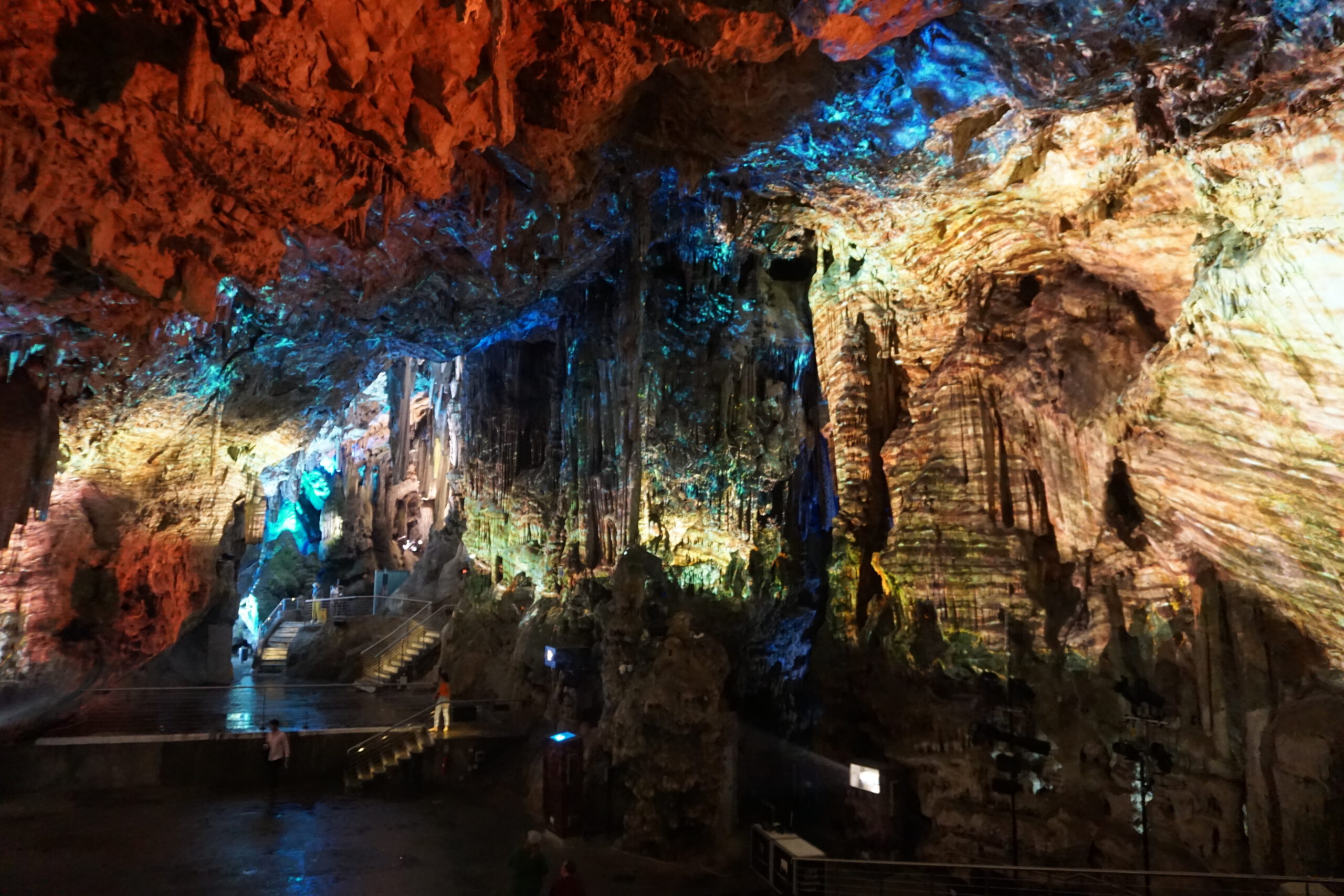
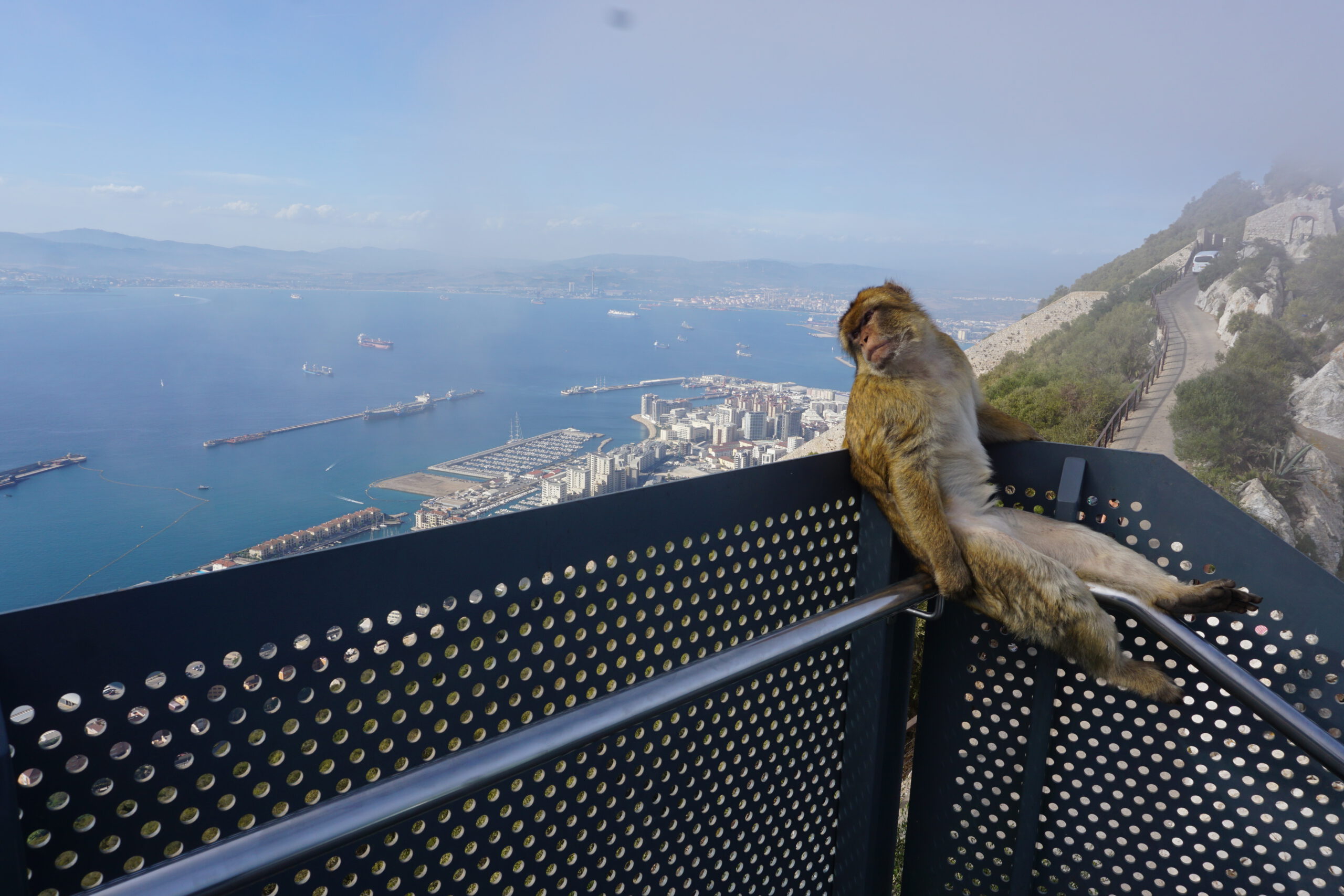
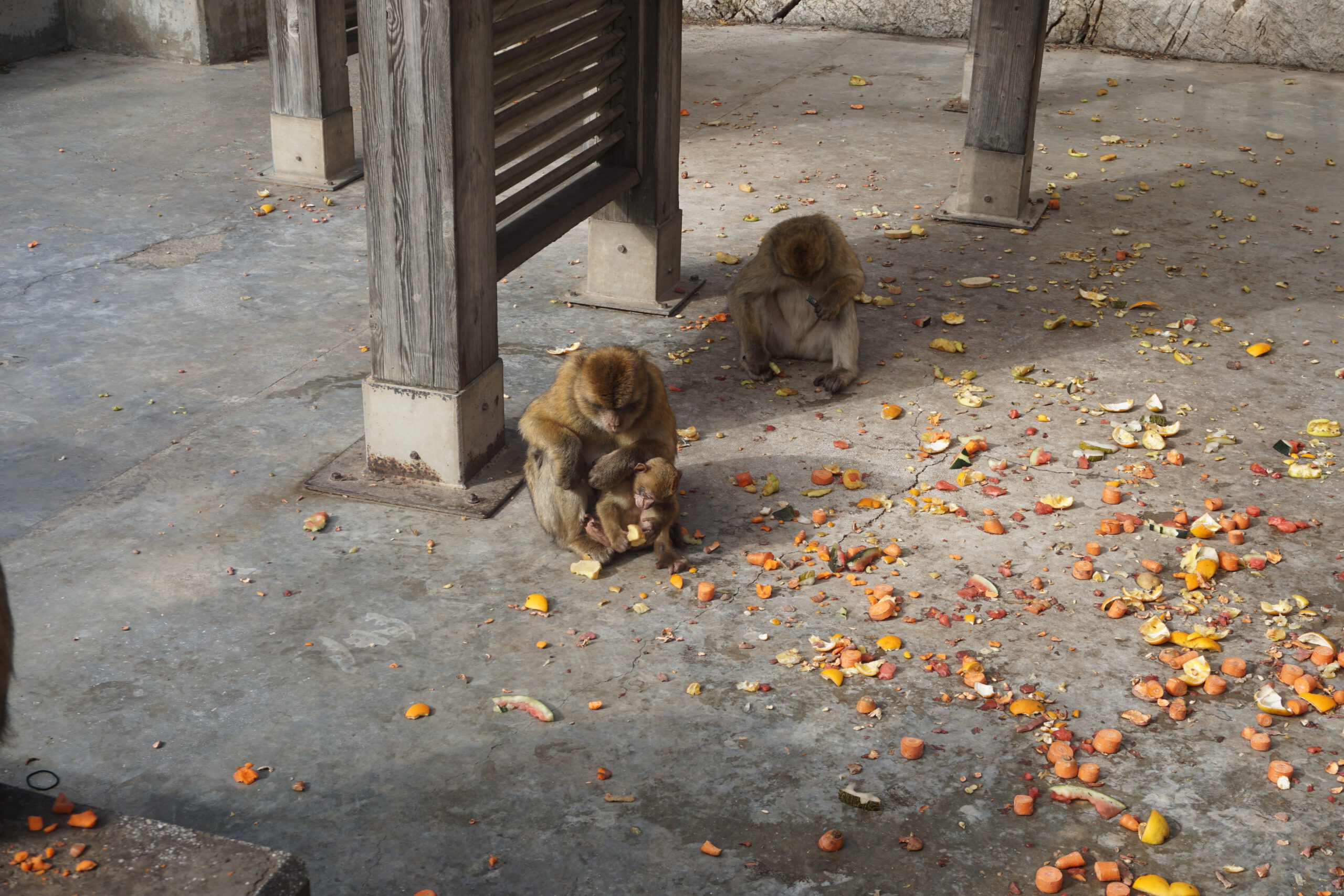
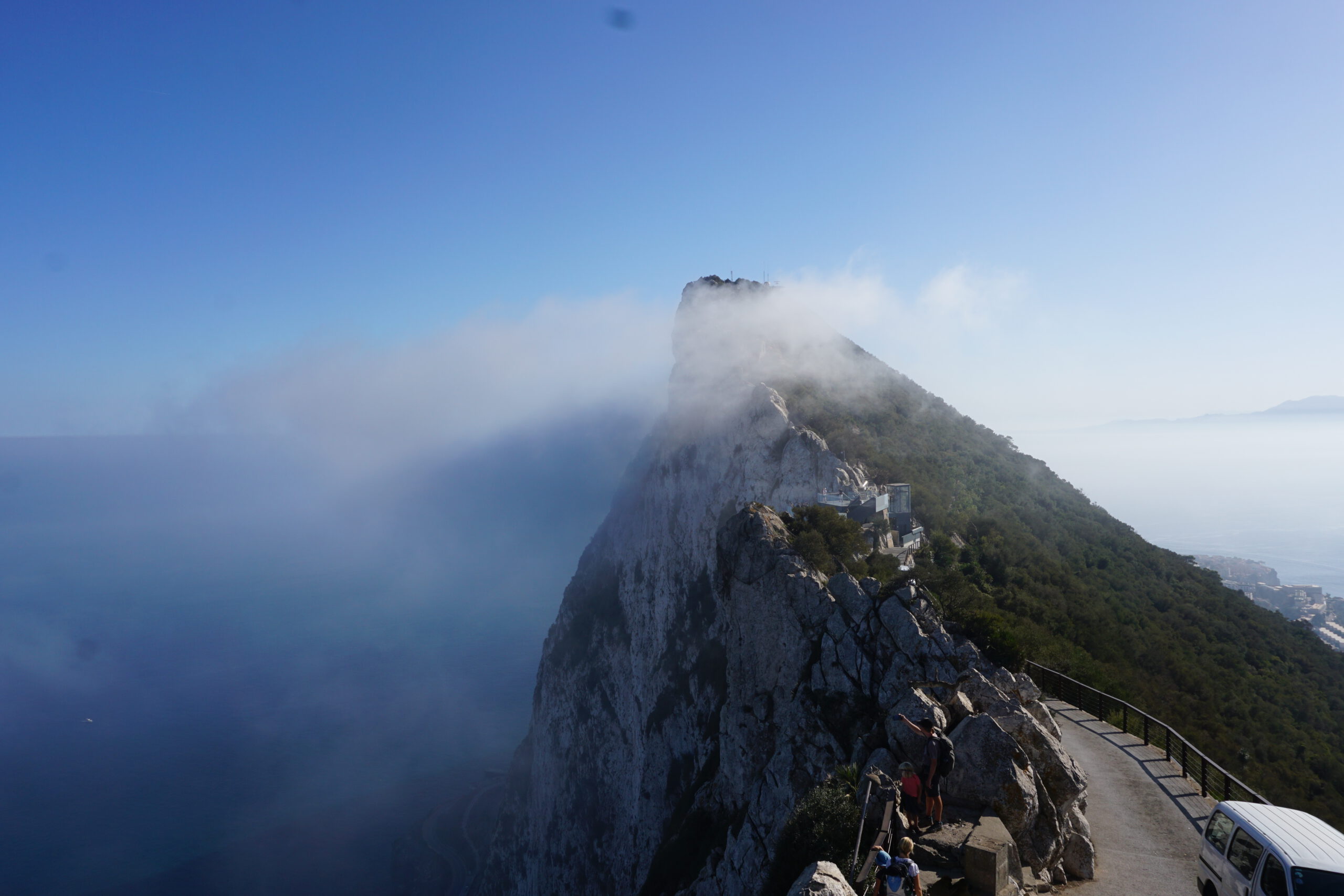
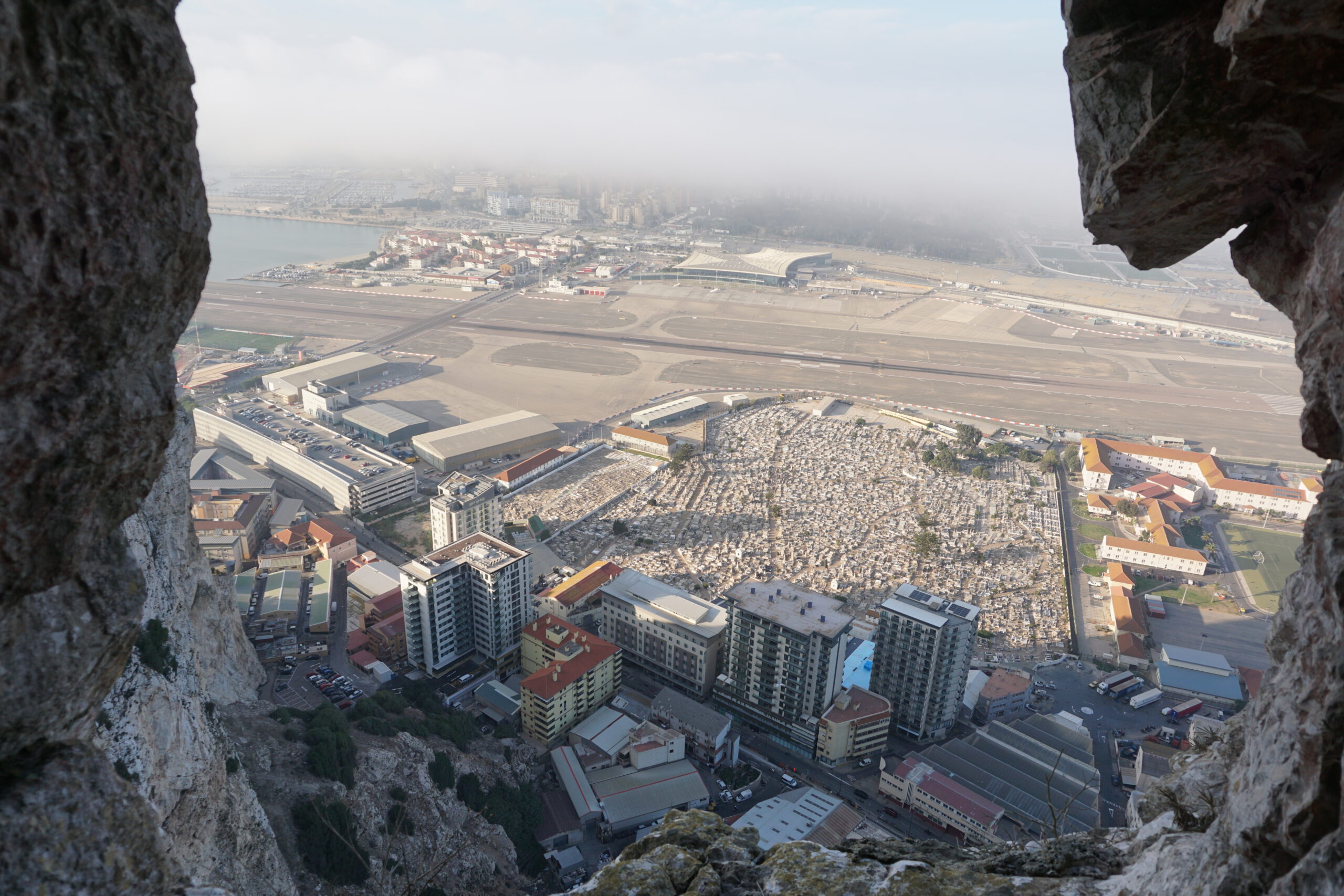
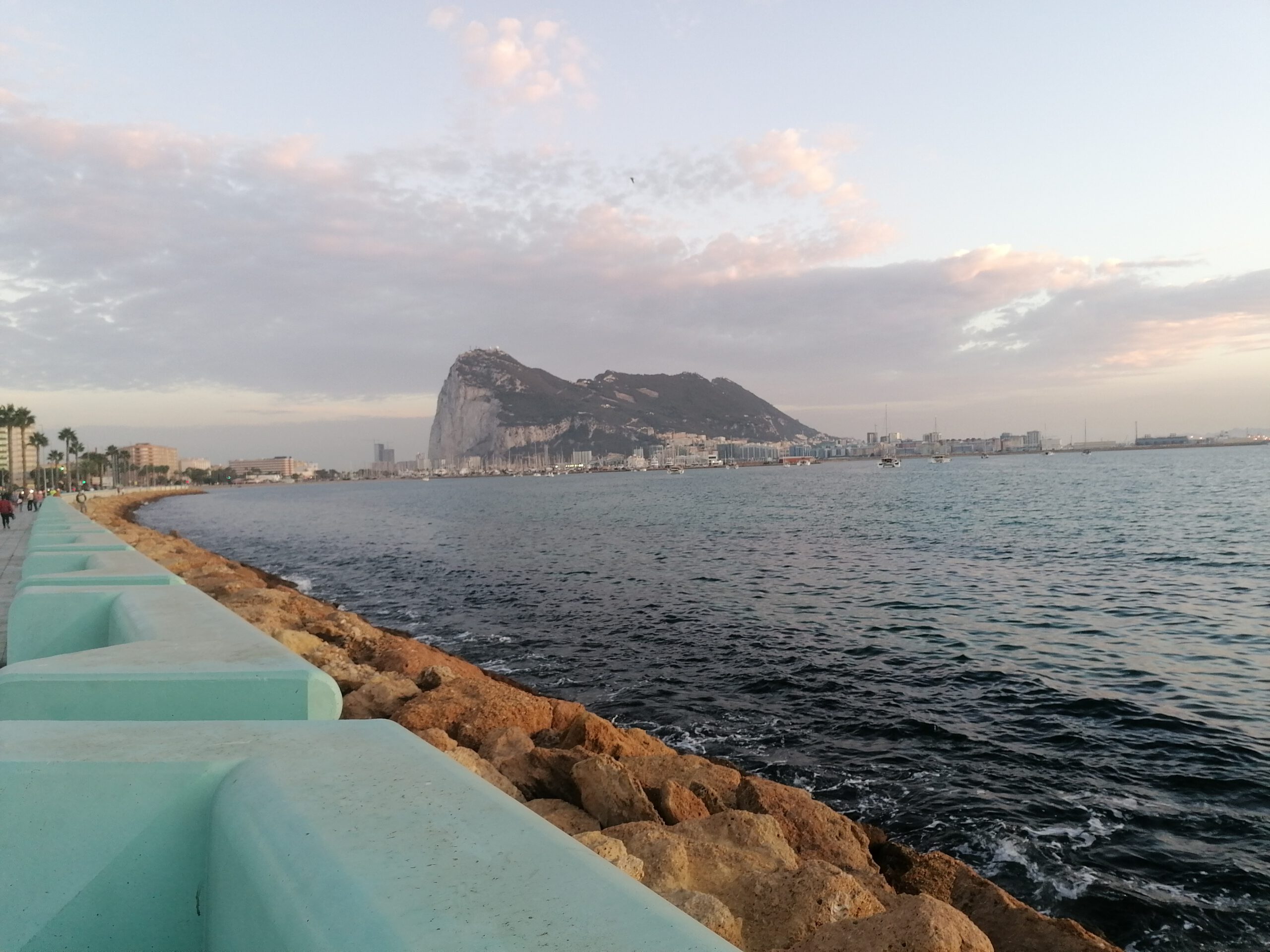
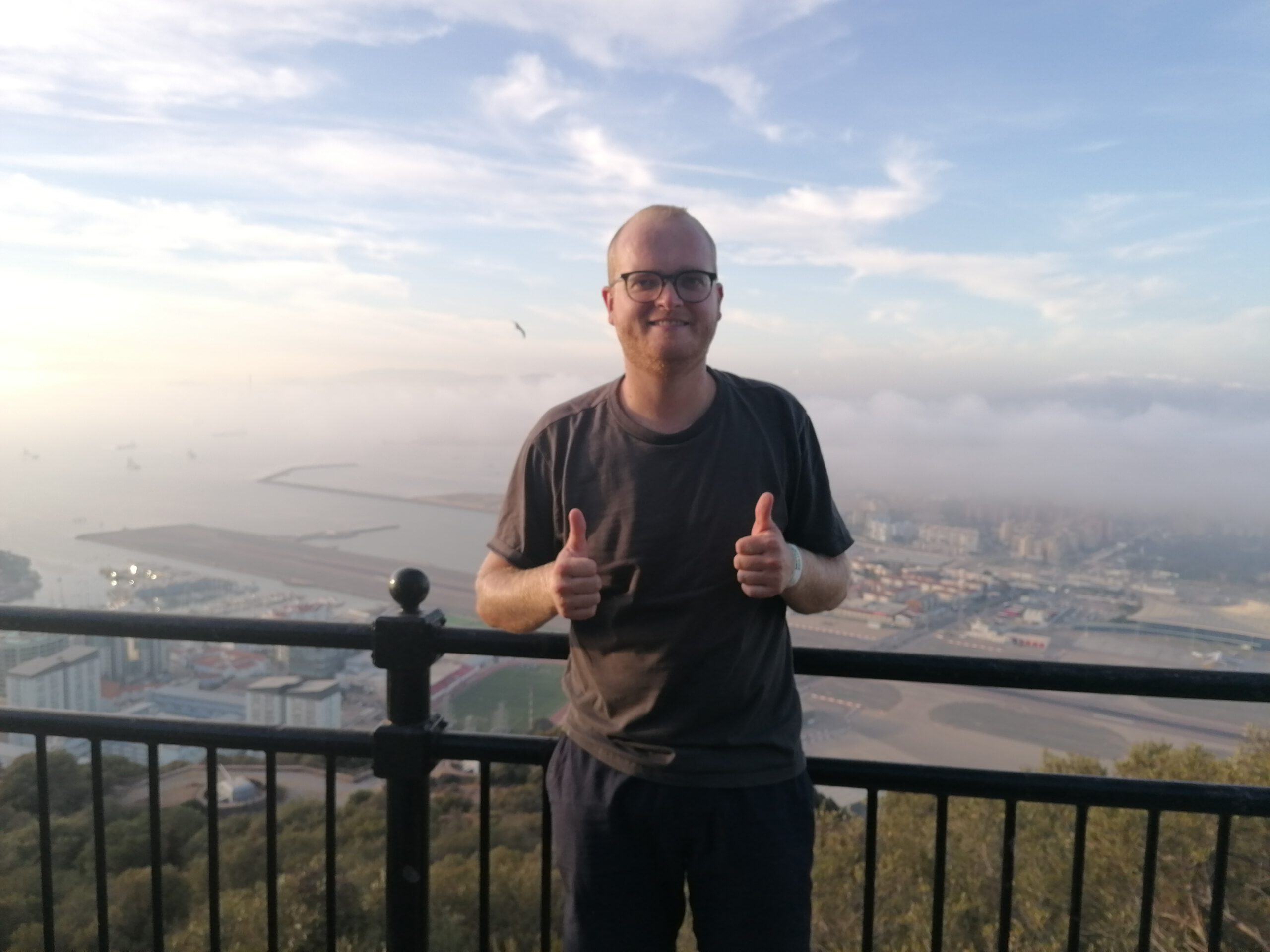
Tips for Gibraltar
There are four ways to get to the top of the Rock: a cable car from the city centre, shared taxis including a guide, minibuses or walking. I was talked into sharing a taxi with other tourists and in hindsight would rather not recommend it if you have enough time to walk. The nature reserve is expensive enough and both cable cars and taxis/minibuses cost about the same again. At the various places there are many signs with information texts, so in my opinion there is no need for the guides, even if they of course convincingly tell you that it is worth it.
The walk from the town up to the top station of the cable car takes about 1.5 hours, I guess, and is a bit strenuous because you have to climb about 350 metres. But then you are rewarded with a fantastic view over the bay and across to Morocco, and you can admire the monkeys that often hang around on the way up. After that, it’s almost all downhill. For the paths you can simply use google-maps, there are no other paths.
From the top station it’s about 10 minutes to the stalactite cave and from there about 1 hour to the tunnels and fortress on the north side of the rock. Then another 10 minutes back to the city centre, so you walk a total of about 3 hours between the different highlights. You can also start with the tunnels on the north side and end at the cave.
The viewpoint on the south side, which is called something with Hercules, is not worth it at all, as the view is better from above. In my opinion, this point is only there to justify the taxis because “you can never do both the south side and the north side on foot, so it’s totally worth taking a taxi”….
In Gibraltar, you pay in pounds, but you can actually pay for everything with a card (including Maestro), so it is not really necessary to exchange money at the border.
By the way, if you are short of money, you can simply grab the paper wristband for the nature reserve from the bins in front of the checkpoints and stick it on your arm (adhesive tape would be helpful for this). It probably worked for some hitchhikers on the spot. But if you have the money, I think it’s only fair to everyone else to pay the entrance fee, even if it’s high.
The successful search for a boat and life with other local sailing hitchhikers
For the first nights in La Linea, I had booked a hostel and was able to arrive there relaxed. I didn’t know yet if I was really in the right place, but I knew that a friend had started from here 3 years ago.
On Tuesday evening, I already visited two harbours and saw that some people had put up notices looking for a ship. So I made a note of my own and put it up on Wednesday before I went to the Monkey Rock. I also wrote directly to all the people whose notes I found to exchange. Some did not reply or replied late. In retrospect, I know that their notes were already out of date and they were already on their way. But a Basque called Mahats got back to me and we met. He told me that there were some others on the spot looking for a boat and that some of them were camping in a “jungle”. I immediately came along and was able to exchange ideas with them directly, which was also totally helpful and motivating over the next few days.
From Friday onwards, I also spent the night in a hammock in the little forest that we call “jungle” and which is right on the edge of the harbour. For some years now, a camp has been set up there every year from September/October by some who are looking for a ride to the Canaries. Of course, it’s not completely legal and the police come by from time to time, but they tolerate it.
I found the place mega cool, as many peers and like-minded people get together there and you totally get along and support each other! Everyone is happy when someone else finds a boat and comes along, although you are also in competition somehow. We did a lot of things together, ate together, went to the beach and spent an evening in Gibraltar for karaoke. On Saturday evening, I played a bit of street music and Mahats, Sven, Dilan and Luka came to the centre especially to see me 😊
There are several ports in Gibraltar and La Linea, but the port “La Alcaidesa” in La Linea is already the one from which most people start towards the Canary Islands, so we mostly hung out there and tried to get into conversation with crews. Since we couldn’t get onto the jetties themselves, we stayed in front of them, talked to people, I played the guitar and when it was possible, we slipped onto the jetties because that was much more helpful.
Thursday was the first day I approached people, and two possible opportunities arose right away. First I spoke to Manuela, who had sold their house in Germany with her husband and two sons and had been travelling around on a sailing yacht for over a year.
Later I spoke to Silke, who has been travelling the world with her Swiss family for 4 months on their own catamaran. They too have broken up everything in Zurich and are on the road indefinitely.
Both families didn’t actually plan to take anyone with them, but we each got on very well and stayed in touch. On Friday evening I was invited to Manuela’s, Christoph’s, Theo’s and Alfred’s on the sailing boat and we had a nice evening. The four of them also play Doppelkopf and we have similar ideas about many things in politics etc. After the evening I had my first possible ride. Theo would have come along on a buddy boat they travel with so I could have had a seat with them. I’m still grateful for that and could very well see myself going with them. We would have had a super good time for sure and I hope we still meet again!
But as they didn’t know when they wanted to leave, wanted to wait for good weather with their small yacht and wanted to make a few more stops in Morocco, it would have taken some time for me to get to the Canaries.
So when Silke got in touch on Sunday and said that they wanted to leave on Monday and that I should drop by, it came in handy. Fortunately, it was also a great match with her husband Fedi and the kids Stella and Siro, and so the family council decided that I could come along, after I could tell them that I had some sailing experience and had played Mexican music on the guitar. (Silke and Fedi were in Mexico for a few months 20 years ago).
So now it can start tomorrow and I am very happy to start this part of the journey!
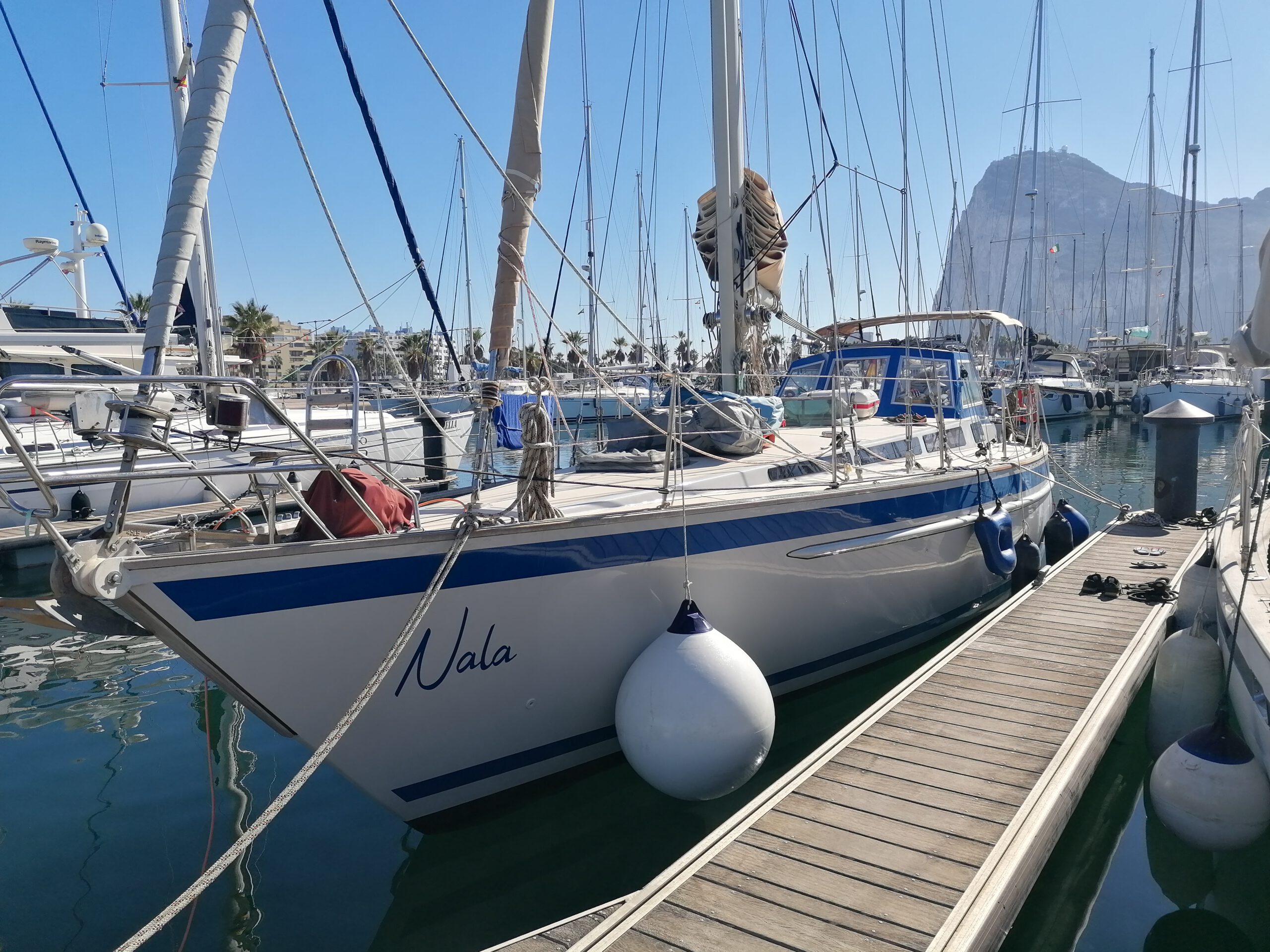

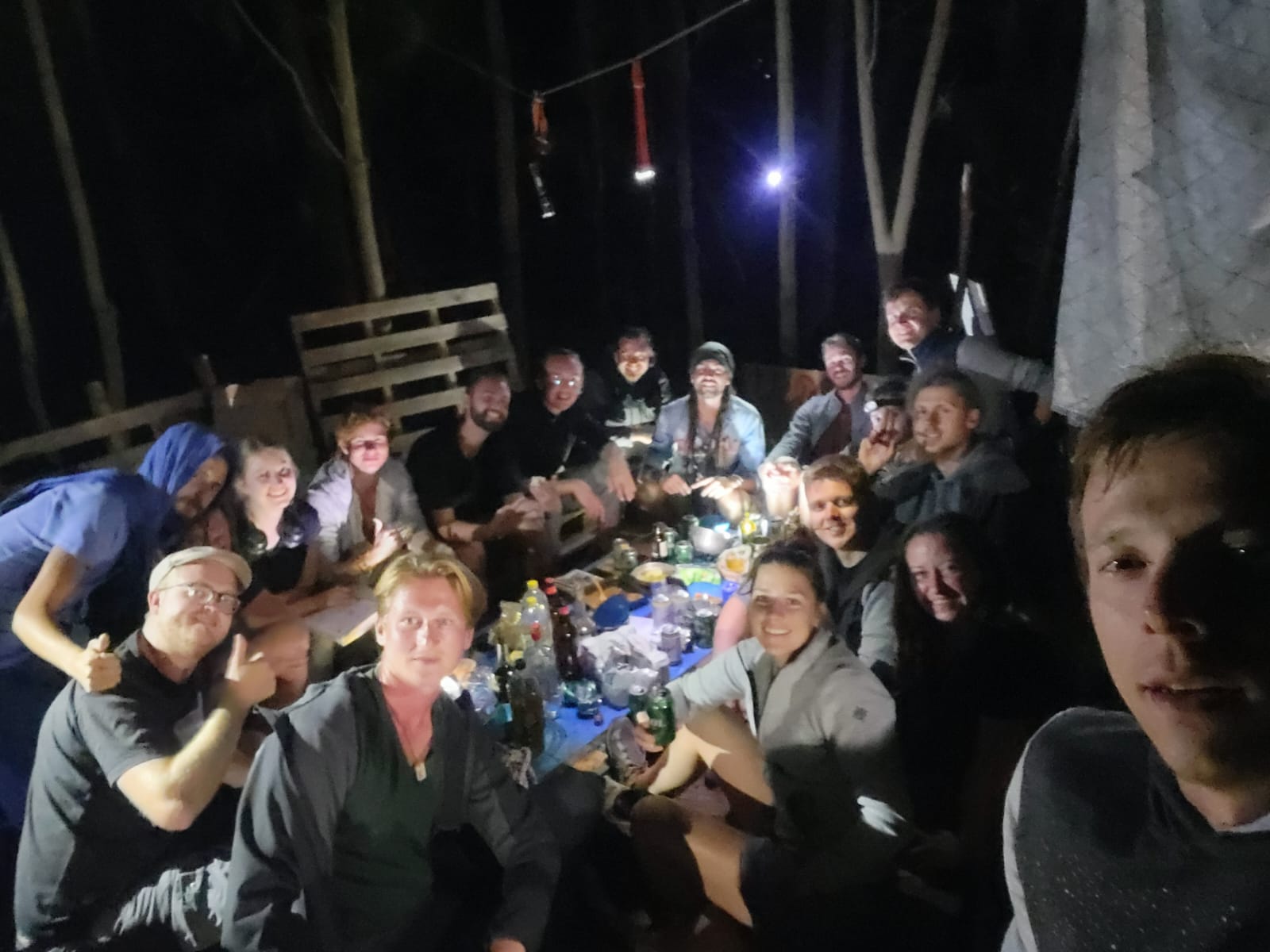
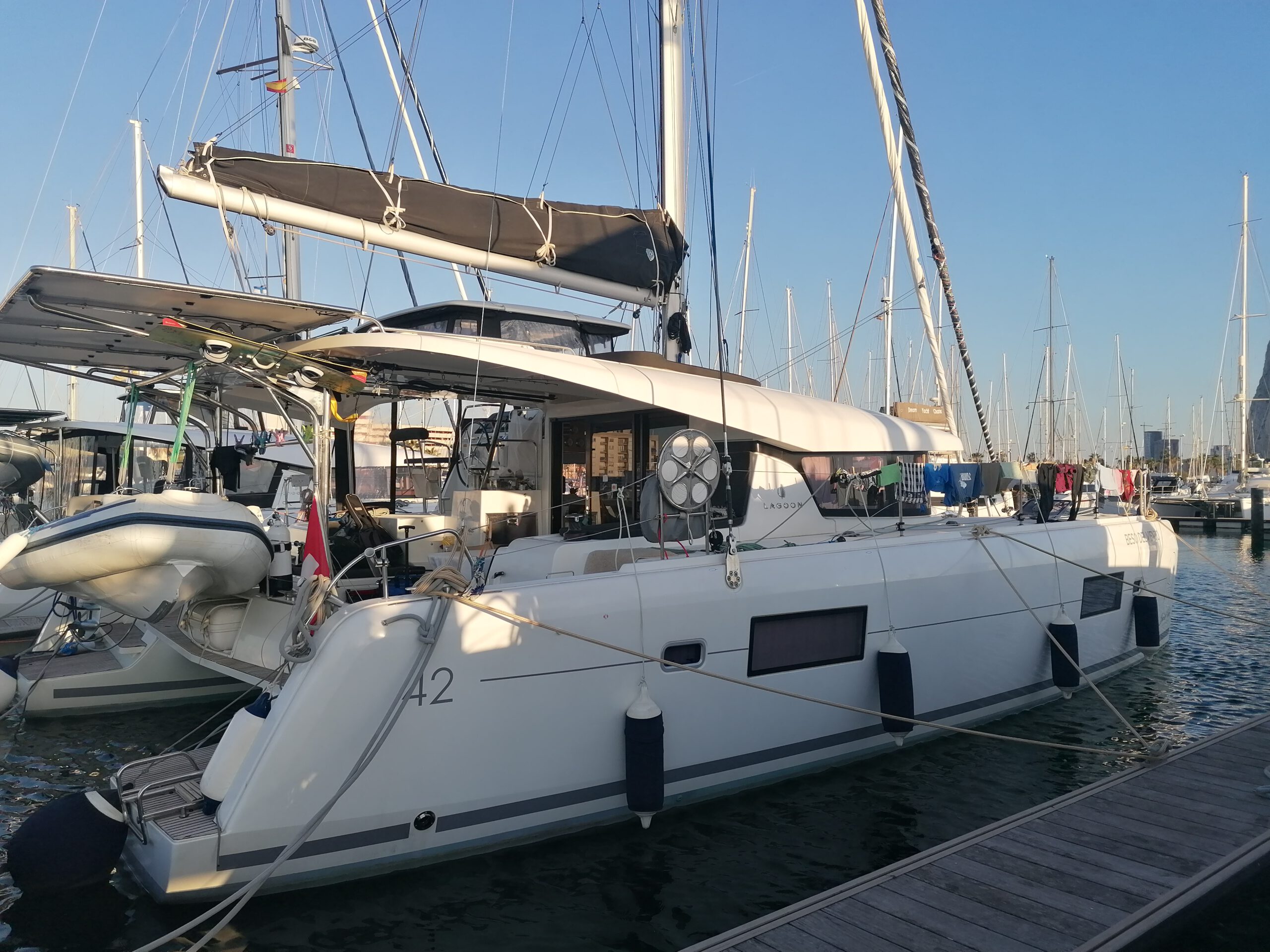
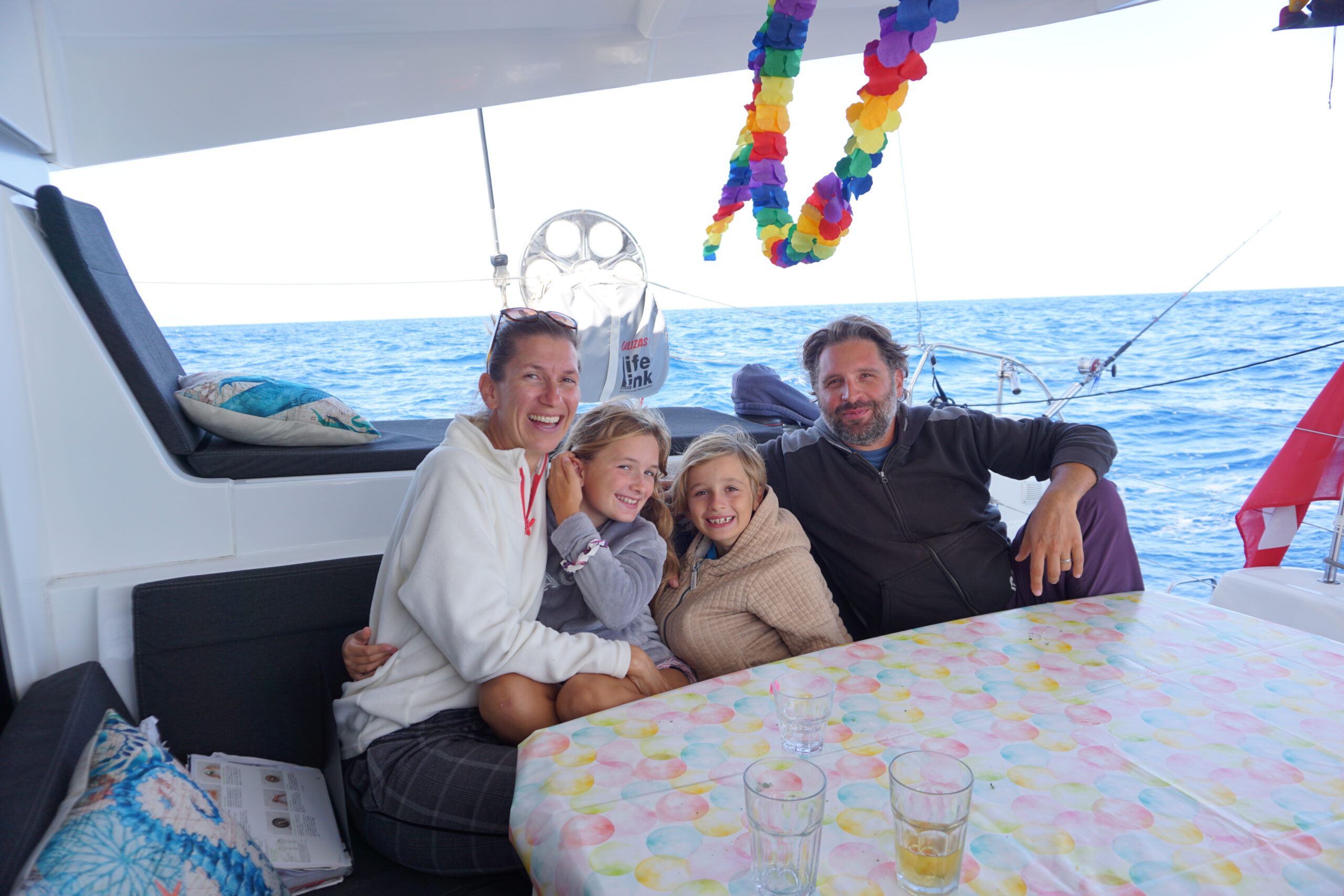
I am happy that I found a boat so quickly. Even though it’s really beautiful here in the jungle, there are great beaches and some new ones arrived today that are really cool, you’re still drawn on and I noticed that I’m not really relaxed and I think it’s the same for the others. Whenever you’re on the beach, for example, you think that you could also be at the harbour and possibly have exactly the encounter that will get you a ship. It’s a test of patience, this way of travelling.
Now I’m looking forward to my last evening in the camp, which I can now enjoy in a completely different way. I want to get out the guitar and we want to sing in a big circle. By now there are almost 20 of us here, after 6 when I arrived. That’s another reason why it’s good that I’m getting away now 😊.
But I’m also sure that the others will find a boat soon. It’s just the season for it and it’s only just beginning. There have been many here in the last few weeks too, all of whom have made it as far as I know. Some start very soon after arriving in Gibraltar: the record was two French women who arrived in the afternoon and left in a boat at night. Others have been here for a long time, waiting for the boat to start on which they can join. Julio, a Spaniard, has been here for a long time. He is out with his dog, which of course makes the search enormously difficult. But Julio seems relaxed about it and at peace with himself. He has been living in nature for over a year and a half, camping in the forest or mountains with his dog Sky. I’m keeping my fingers crossed that he’ll find a way too!
The fact that I found a boat so quickly is probably also because I have quite a good “profile”: In particular, my sailing skills (most people here have never sailed), the different languages I speak and my guitar are big plus points, I think. More thoughts on this in my blog post on hitchhiking across the Atlantic including some tips!
By the way, when you are here in the camp, you get the impression that hitchhiking across the Atlantic on sailboats is the most natural thing in the world. Quite a few – some of them only 19 years old – have the plan to travel around the world without using the plane and without spending money on transport. Inspiring people and many great encounters. I can’t wait to see who I meet on the Canary Islands!

